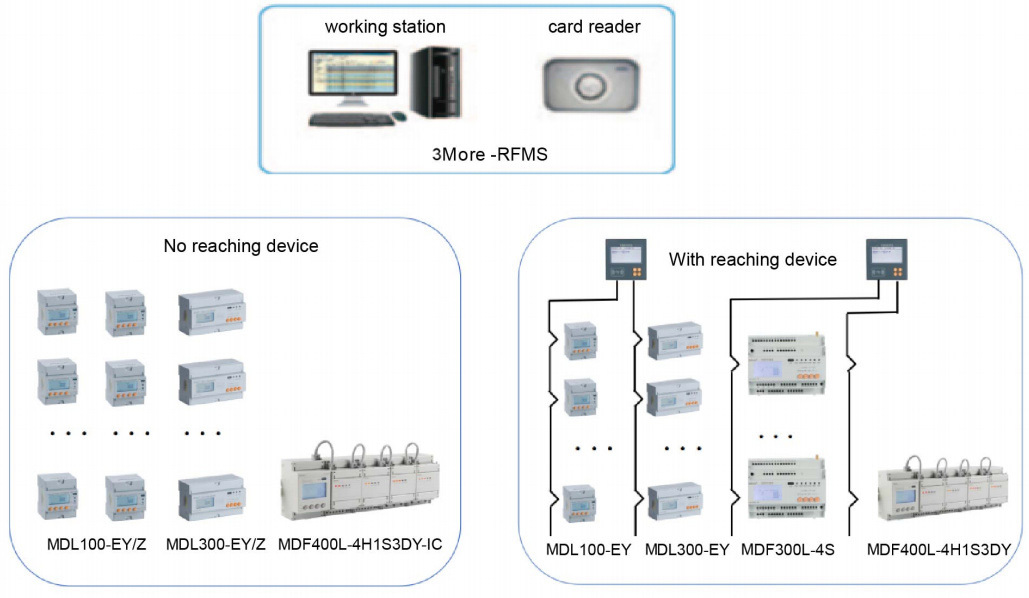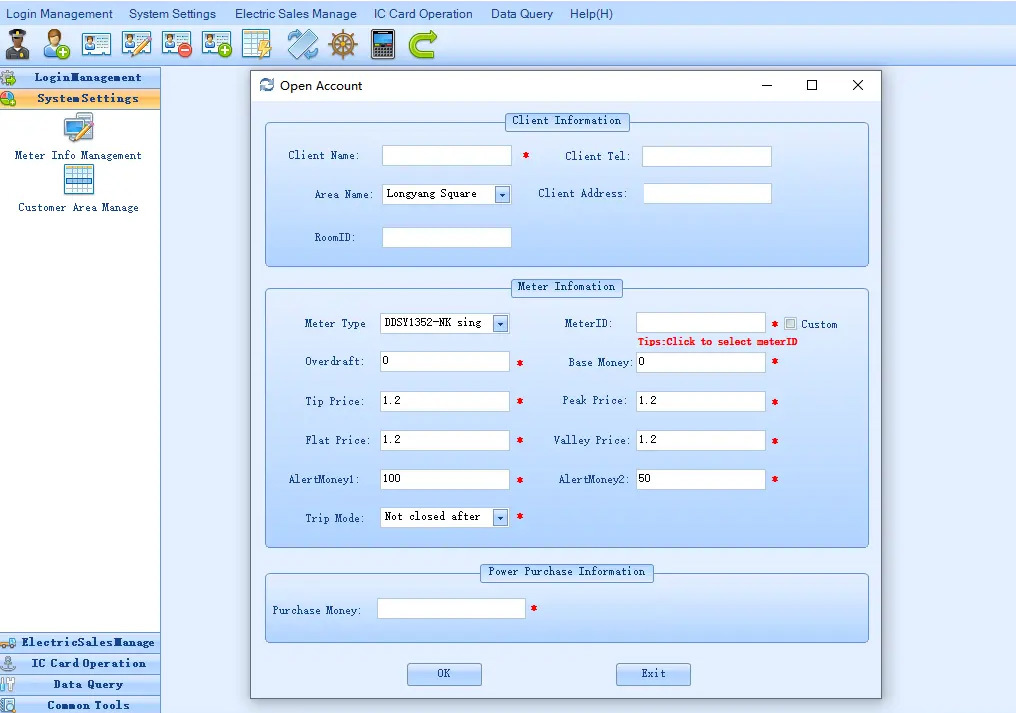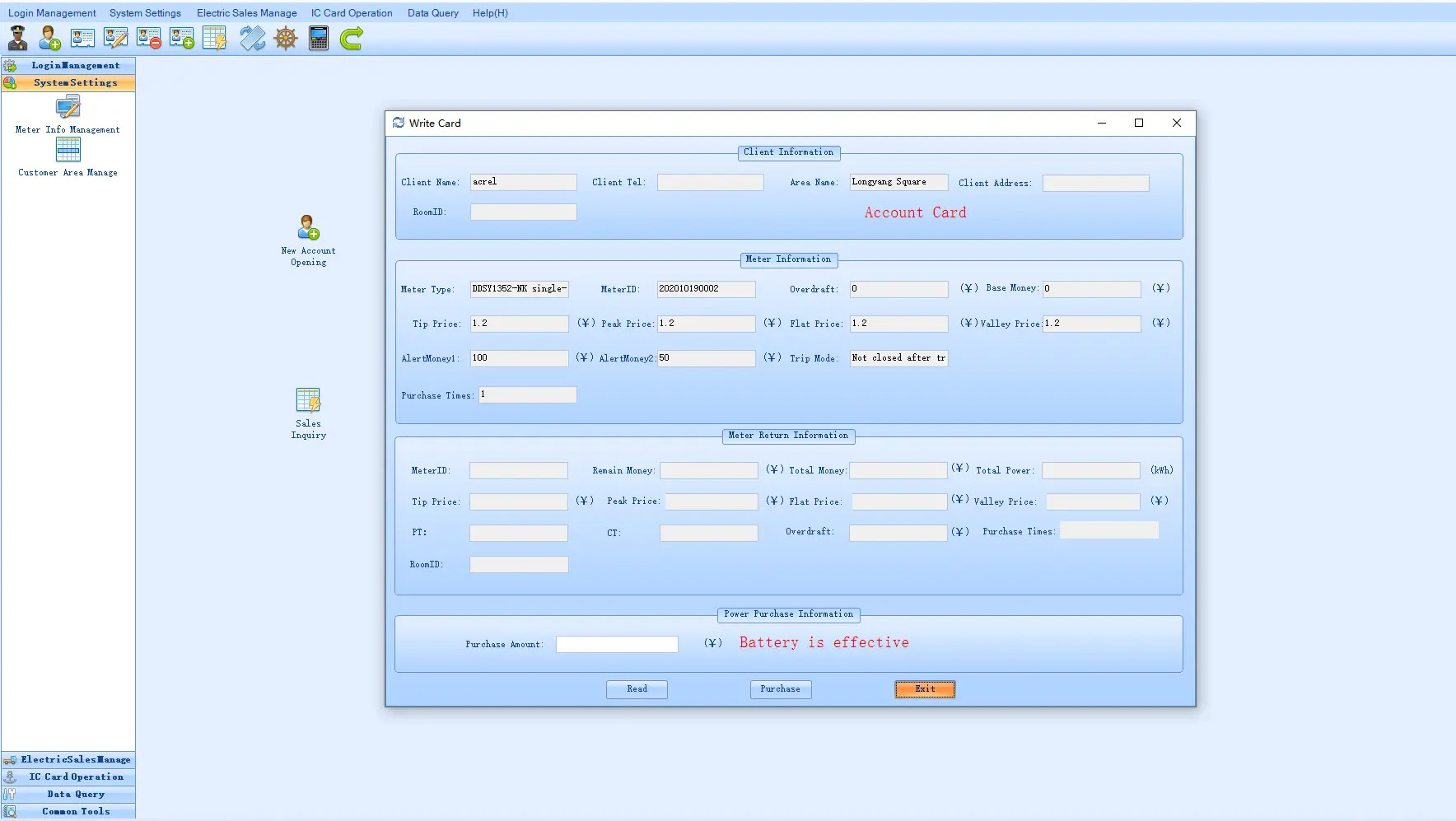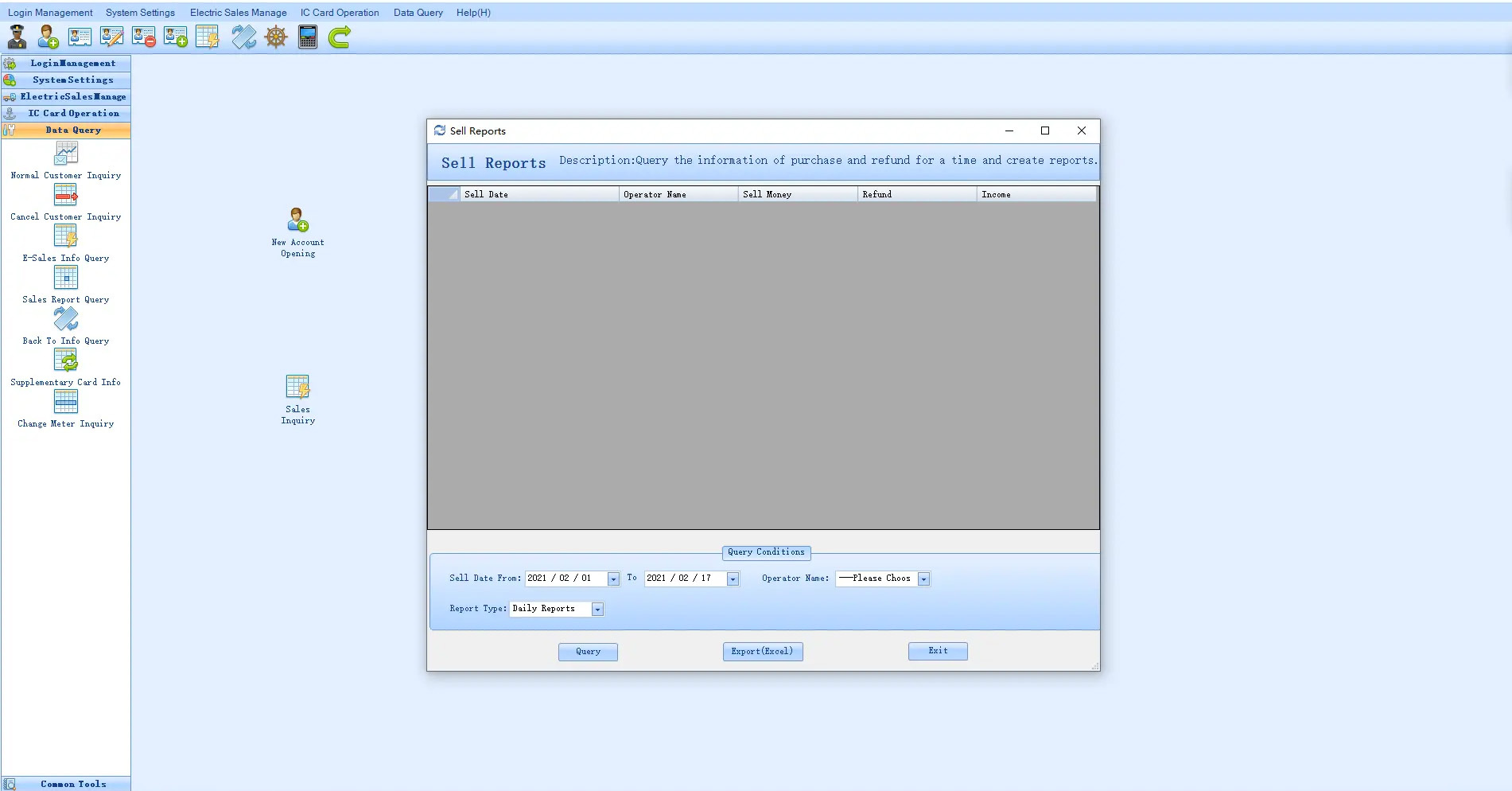News
Prepaid Solution
Release time:
2025/07/16
Application
◆ Chain Stores
◆ Chain Hotels
◆ Properties
◆ University Dormitories
◆ Intelligent Communities
Structure

Main Functions
Card recharge software overview

Open account

Electricity recharge

Electricity recharge report

Product Selection
|
Type |
Functions |
|
MDL100-EY |
Single phase;10(60)A Direct connect internal relay;Remote recharge |
|
MDL300-EY |
Three phase;10(80)A Direct connect,internal relay;1(6)A CT connect,out relay;Remote recharge |
|
MDL100-EY/Z |
Single phase;10(60)A Direct connect internal relay;RF card or remote recharge |
|
MDL300-EY/Z |
Three phase;10(80)A Direct connect internal relay;RF card or remote recharge |
|
MDK100-EY/RF |
Single phase;10(60)A Direct connect Out relay;RF card |
|
MDL300-EY/RF |
Three phase;10(80)A Direct connect out relay;RF card |
|
MDF300L-RF |
RF card Recharge device |
|
M&W |
Card reader |
|
3More-RFMS |
Prepaid recharge software |
Hall Effect Current Sensor Product Introduction
The Hall Effect Current Sensor is a sophisticated and highly useful device in the field of electrical measurement and monitoring.
1. Principle of Operation
The Hall Effect forms the basis of this sensor’s functionality. When a current - carrying conductor is placed in a magnetic field perpendicular to the direction of current flow, a voltage difference (Hall voltage) is generated across the conductor, perpendicular to both the current and the magnetic field. In a Hall Effect Current Sensor, a magnetic field is created around the current - carrying wire or conductor whose current is to be measured. The sensor then detects this magnetic field and, using the Hall effect principle, generates a proportional output voltage or current that can be easily measured and calibrated to represent the magnitude of the original current.
2. Design and Construction
Core Material: These sensors typically have a high - permeability core that helps in concentrating the magnetic field generated by the current - carrying conductor. This core material ensures efficient magnetic coupling and accurate measurement.
Hall Element: At the heart of the sensor is the Hall element, which is a semiconductor device. It is carefully fabricated to be highly sensitive to the magnetic field. The Hall element is integrated into the sensor’s circuitry in such a way that it can accurately detect the magnetic field variations due to the current being measured.
Signal Conditioning Circuitry: The sensor is equipped with signal conditioning circuitry. This circuitry takes the raw Hall voltage output from the Hall element and amplifies, filters, and linearizes it. This results in a more accurate and stable output signal that can be directly related to the input current.
3. Key Features
Non - Intrusive Measurement: One of the major advantages of the Hall Effect Current Sensor is that it offers non - intrusive current measurement. It does not require breaking the circuit or inserting a shunt resistor in line with the current - carrying conductor. This makes it ideal for applications where circuit interruption is not possible or desirable.
Wide Current Range: These sensors can be designed to measure a wide range of currents, from very small currents (in the milliampere range) to very large currents (in the kiloampere range). This versatility makes them suitable for a variety of applications in different industries.
High Accuracy: They provide high - accuracy measurements. The combination of the sensitive Hall element and advanced signal conditioning circuitry ensures that the measured current value closely matches the actual current flowing through the conductor. Typical accuracy levels can range from a fraction of a percent to a few percent, depending on the sensor’s design and quality.
Isolation: Hall Effect Current Sensors often provide electrical isolation between the input (the current - carrying conductor) and the output (the measured signal). This isolation is important in many applications, especially in high - voltage systems, as it helps in protecting the measuring and control circuitry from potential electrical faults and interference.
4. Applications
Industrial Automation: In industrial settings, these sensors are used to monitor and control the current in motors, drives, and other electrical equipment. By accurately measuring the current, operators can detect overloads, underloads, and other abnormal conditions, enabling timely maintenance and preventing equipment damage.
Power Distribution and Management: In power grids and electrical distribution systems, Hall Effect Current Sensors are used to measure the current flowing through power lines. This information is crucial for load balancing, power factor correction, and detecting power theft or abnormal power consumption patterns.
Renewable Energy Systems: In solar panels and wind turbines, these sensors are used to monitor the current output of the generators. This helps in optimizing the energy harvesting process and ensuring the efficient operation of the renewable energy systems.
Automotive Industry: In electric and hybrid vehicles, Hall Effect Current Sensors are used to measure the current in the battery management system, motors, and charging circuits. This enables precise control of the vehicle’s power systems and helps in improving the overall performance and safety of the vehicle.
In summary, the Hall Effect Current Sensor is an indispensable device for accurate and reliable current measurement in a wide range of applications across multiple industries.
keywords
Previous Page
Previous Page:
Tel: +86-17755160811
Email: Sherry.fu@3moretech.com
Address: Building A1, Liheng Industrial Plaza II, Economic Development Zone, Hefei, Anhui,China




Copyright© 2024 Hefei 3more Intelligent Technology Co., Ltd. All Rights Reserved





